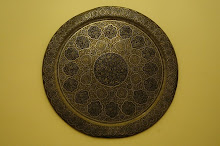Most analysis points to economic failure, unemployment and corruption as the lead causes of the uprisings in the Arab world. Certainly, the frozen and oppressive political cultures have not delivered what people need, neither materially nor, equally importantly, psychologically in tems of dignity, autonomy and other key needs.
However, there is mounting evidence that changes in the Arab world are also the result of a larger global process: climate change and the poor human response to the changes we are creacting on the planet. The Center for American Progress, the Stimson Centre, and the Center for Climate and Security have produced a collection of essays that demonstrate how climate change has disrupted the Arab world.
Climate change is causing fluctuations in food supplies and prices across the world, but the top nine wheat importers in the world are in the Middle East, and seven had political protests and violence in 2011. Furthermore, the Middle East is already one of the driest regions of the world, with considerable water security problems. In terms of political culture and structure, the Arab world was and continues to be ineffectively set up to react to these very significant challenges. Indeed, the whole planet and all countries will have to manage and adapt to these human-created shifts. The Arab world may simply be the weak link in the chain in terms of both resources and political resilience and the ability to react successfully to these global challenges.
We have discussed before how our ¨old mind¨, with its simple and dramatic perceptions and built-in greeds, cannot perceive slower change or see the larger picture (Old World New Mind), such as how our behaviour affects the climate. We are all somehow victims of the world we ourselves have created, and the Arab world may simply be the worst victim of all.
Despair need not be the response to this realistic diagnosis. The report discussed here and others suggest constructive ways forward, including "greening" Arab economies (underway to some degree in some countries), adopting innovative technologies and aligning government policies with these critical steps. However, as we see every day, Arab politics, especially post-revolutions, are immersed in ideological or ethnic battles that suck up all the society´s resources in a massive distraction scheme from the necessary work of responding to these very real life challenges.
The Arab world and the Middle East can respond successfully to the water, food and resources needs of its populations and the inevitable pressures of climate change. This will demand, however, new kinds of thinking and paradigms: regional perspectives, cooperative rather than zero-sum game approaches, including between private and public sectors, and a considerable shift of understanding about human behaviour. One of the key paradigms that needs to be inculcated in this process of evolution is that human behaviour cannot be changed until it is better understood (see Human Givens and our posts on The Missing Piece).
If these steps are taken and greater awareness does occur, there is no reason why the future could not see a new "Green Arabia".
However, there is mounting evidence that changes in the Arab world are also the result of a larger global process: climate change and the poor human response to the changes we are creacting on the planet. The Center for American Progress, the Stimson Centre, and the Center for Climate and Security have produced a collection of essays that demonstrate how climate change has disrupted the Arab world.
Climate change is causing fluctuations in food supplies and prices across the world, but the top nine wheat importers in the world are in the Middle East, and seven had political protests and violence in 2011. Furthermore, the Middle East is already one of the driest regions of the world, with considerable water security problems. In terms of political culture and structure, the Arab world was and continues to be ineffectively set up to react to these very significant challenges. Indeed, the whole planet and all countries will have to manage and adapt to these human-created shifts. The Arab world may simply be the weak link in the chain in terms of both resources and political resilience and the ability to react successfully to these global challenges.
We have discussed before how our ¨old mind¨, with its simple and dramatic perceptions and built-in greeds, cannot perceive slower change or see the larger picture (Old World New Mind), such as how our behaviour affects the climate. We are all somehow victims of the world we ourselves have created, and the Arab world may simply be the worst victim of all.
Despair need not be the response to this realistic diagnosis. The report discussed here and others suggest constructive ways forward, including "greening" Arab economies (underway to some degree in some countries), adopting innovative technologies and aligning government policies with these critical steps. However, as we see every day, Arab politics, especially post-revolutions, are immersed in ideological or ethnic battles that suck up all the society´s resources in a massive distraction scheme from the necessary work of responding to these very real life challenges.
The Arab world and the Middle East can respond successfully to the water, food and resources needs of its populations and the inevitable pressures of climate change. This will demand, however, new kinds of thinking and paradigms: regional perspectives, cooperative rather than zero-sum game approaches, including between private and public sectors, and a considerable shift of understanding about human behaviour. One of the key paradigms that needs to be inculcated in this process of evolution is that human behaviour cannot be changed until it is better understood (see Human Givens and our posts on The Missing Piece).
If these steps are taken and greater awareness does occur, there is no reason why the future could not see a new "Green Arabia".



















